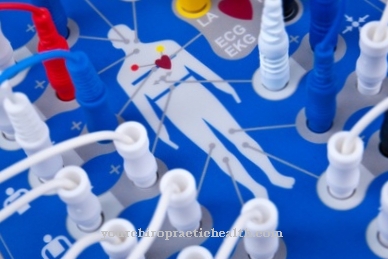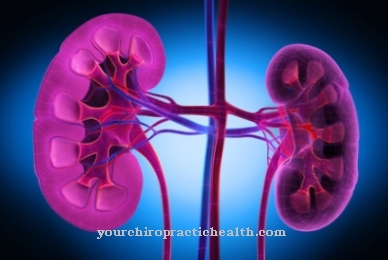A curettage is used for cleaning or for the extraction of examination material from the affected organ. It is usually used to describe the scraping of the uterus after a miscarriage. Although the risks are small, uterine injuries can occur during the procedure and infections after the procedure, but these are easy to treat.
What is a scraping?

The term curettage refers to the surgical removal of tissue using a curette, an instrument that was made for this very purpose. A curette is available in a wide variety of designs, mostly it has a cutting or blunt spoon.
Although Scrapes are also used in other medical disciplines, it usually means a scraping of the uterus used in gynecology. Curettage can also be used in dermatology, for example to remove warts, or in dentistry to treat periodontal disease.
Scraping off the lining of the uterus is also known as "abrasio uteri" and is necessary after a miscarriage, for example.
Function, effect & goals
At a curettage The treating gynecologist first scrapes the cervix and then, after widening the cervix a little, the uterine cavity with a curette. It is possible to suction the removed tissue immediately, but this is only done under general anesthesia and is known as suction curettage.
If the curettage is carried out for diagnostic purposes, for example in the case of menstrual cramps, only very little mucous membrane is removed with a probe; this is called an aspiration curettage. No anesthesia or only local anesthesia of the patient is necessary. After the sample has been taken, the tissue is examined to identify any malignant changes.
For menstrual cramps, a sample is usually taken from the cervix and then from the uterus itself. This procedure is known as fractional abrasion and is also used in women who have menstrual periods after menopause. With a curettage, a hysteroscopy, i.e. a uterine specimen, can be performed at the same time. In most cases, menstrual cramps or symptoms during menopause are harmless and hormone-related, but in rare cases it can also be uterine cancer.
Therefore, a curettage is performed if there are suspicious ultrasound or cancer smear findings. If a woman has a miscarriage, it is necessary to scrape the uterine cavity to completely remove the embryo and placenta tissue. Failure to scrape the uterus after a miscarriage can lead to serious infections. Curettage can also be used for abortion. In this case a suction curettage is usually carried out.
The aim of a curettage is either to obtain specimen or to clean the uterine cavity. Genetic testing of the material obtained from curettage is possible if a woman suffers multiple miscarriages. Any serious genetic diseases can be clarified.
Risks, side effects & dangers
Light bleeding after curettage is completely normal. Sometimes one leads curettage also lead to fever, abdominal pain, and heavy bleeding similar to menstruation.
In these cases, the attending physician should be consulted, as there may be an infection that requires treatment. If there is heavy bleeding shortly after the procedure, there is also the risk that there is an injury to blood vessels that must be treated immediately. In exceptional cases, the wall of the uterus is injured during curettage. In principle, however, this can be treated well or heals by itself.
If the attending physician pierces the uterine wall with the tip of his instrument, bleeding into the abdomen and severe infections of the uterus or ovaries can occur. Curettage after a miscarriage or for an abortion means a great deal of psychological stress for the woman concerned and possibly also for her partner.
If the woman is not able to cope with her grief on her own after the procedure, professional help should be sought. Many gynecologists recommend a contact after a curettage. All in all, however, a curettage is a routine procedure that is rarely associated with complications.

























.jpg)

.jpg)
